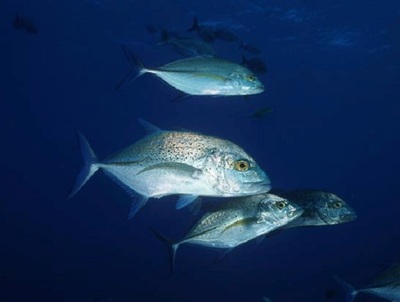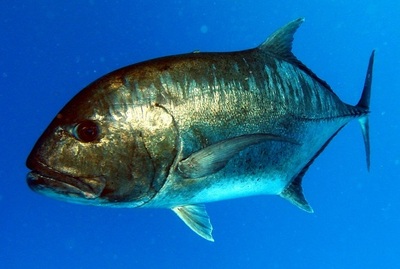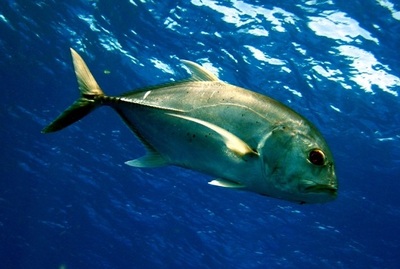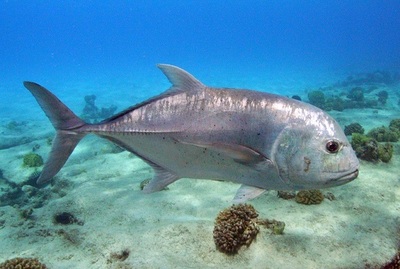Trevally
|
The Giant Trevally, which grows to over 130 lb (62 kg), is the largest of the eight Caranx species which occur in the Indo Pacific region. It has a small oval shaped patch of scales in the centre of the larger scale less area on the breast in front of the ventral fins, distinguishing it from the Bigeye Trevally (Caranx (Caranx) sexfasciatus) whose breast is fully scaled. In some specimens (about 5%) this oval patch of scales is extensive enough to make detection of the scale less area difficult. The body and head are usually very deep with a blunt snout. The lateral line is strongly curved anteriorly. The straight portion is covered with scutes; 25 33 in the giant trevally and 28 37 in the bigeye. The first dorsal fin consists of 8 spines, the second of 17 21 soft rays, and anal fin of 3 spines and 15 17 soft rays.
Gill rakers on the first arch total 18 23. There is no spot on the operculum such as is found on the bigeye trevally, nor is there a spot at the base of the pectoral fins such as appears on the crevalle jacks (Caranx hippos and Caranx caninus), the close Atlantic and eastern Pacific relatives of this species.
|
Adults are sedentary, prefer rocky areas near shore or outside reef drop offs and feed most actively at night. It is a highly rated sport fish in the waters of Kenya both for its large size and for the hard fight it gives. Fishing methods include surf fishing, drifting, or still fishing using live or cut baits. Trolling with baits and lures can also bring results. Baits and lures include Mullet, Herring, Sauri, Garfish, Anchovy, Squid, cut strip baits, Konaheads, Knuckleheads, Bulletheads, Feathers, plastic jigs, plastic fish and squids, drone spoons, and rope lures. The pinkish flesh is highly esteemed as food in some areas and is also frequently used for strip baits, cut baits or chum.
Fish data extract from INTERNATIONAL GAME FISH ASSOCIATION





